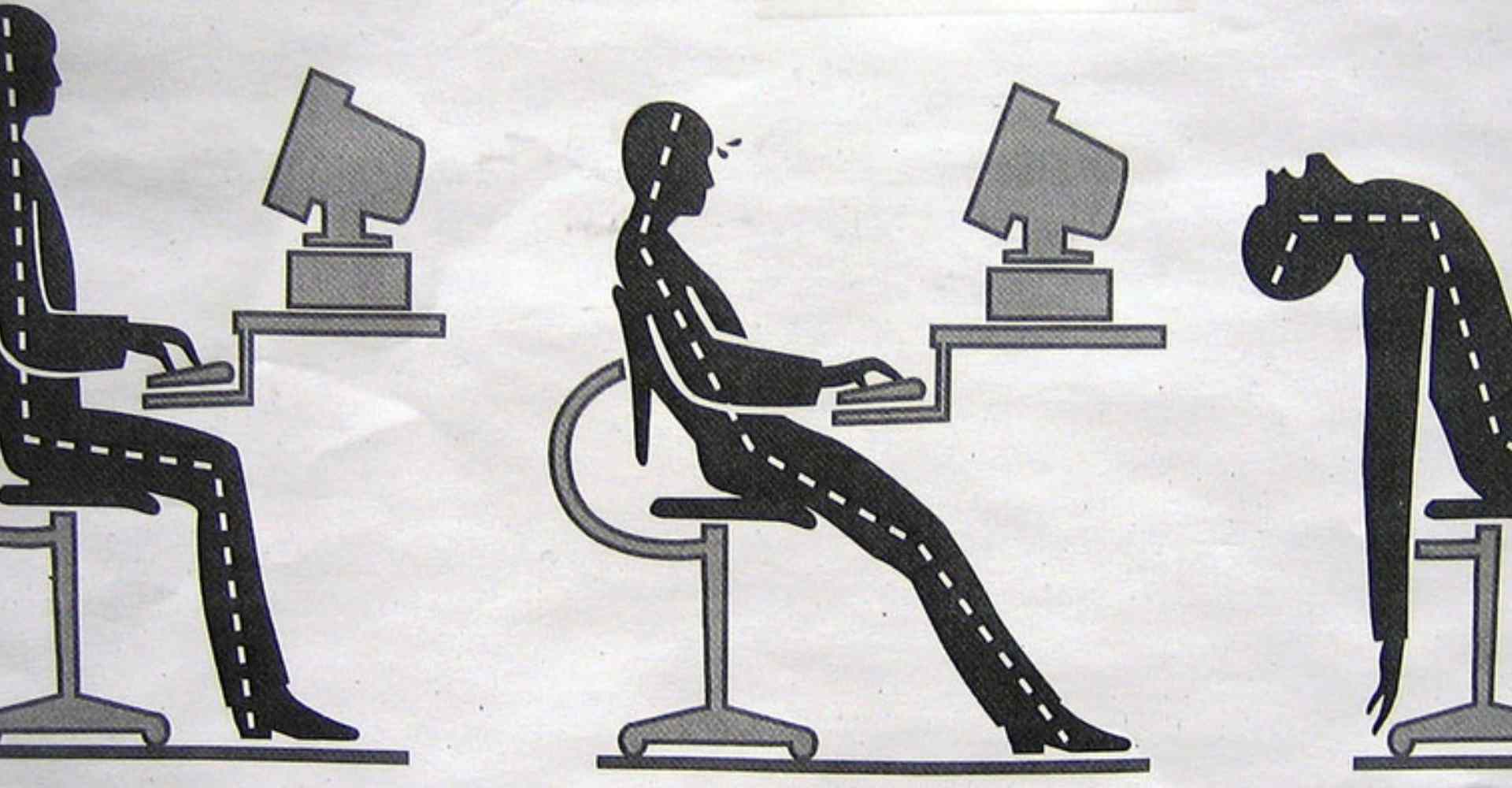Children are often taught to sit keeping their back straight. However, today we seem to have forgotten this healthy advice as we spend abundant time sitting in front of the computer and laptops or fiddling with gadgets. As we are glued to computer to get most out of the extensive World Wide Web, we change our posture from leaning over the desk to lazily curling the whole body into the chair. The effects a bad posture can create seem insignificant at a young age, as switching back to a good posture seems easy. However, as years pass by, with increasing back and neck pain, one recognises the need to maintaining a good posture at all times.
Posture refers to your position while standing, sitting or lying down. A good posture is one that creates least amount of strain on supporting muscles and ligaments when you move or perform weight-bearing activity. It is the correct alignment of body parts supported by the right amount of muscle tension against gravity. Usually we do not consciously maintain normal posture. Certain muscles do it for us.
How Does a Good Posture Help?
- It helps you avoid back and neck pain. Researches have found that those suffering with back pain are greatly benefited with improvement in posture.
- Good posture keeps your bones and joints in proper alignment so that your muscles are used more efficiently, and without strain.
- Good posture ensures proper breathing, which enhances the cardiovascular system, allowing enough inflow of oxygen to the nervous system, organs and other tissues. Proper breathing also sends more oxygen to your brain, boosting your concentration and thinking ability.
- First impression is last impression! A good posture adds to your appearance, creates a good first impression and makes you look more confident, positive and smarter.
- A good posture helps you avoid health complications as bad posture over time can result in increased risk of slipped disc, back pain and poor blood circulation.
- Good posture allows the body to use less energy and thereby prevent muscle fatigue.
What is a Good Posture?
Good sitting posture is one in which your back is straight, your bottom is at the back of your chair, and your feet are flat on the floor. Avoid sitting in the same position for long periods of time. For a good standing posture, you can imagine a straight line from your earlobe through your shoulder, hip, knee and middle of you ankle. If you have to stand for a long time, shift your weight from your toes to your heels, or from one foot to the other. For a healthy lying posture, use the mattress that is right for you. Sleep on your side or back to avoid back pain and avoid sleeping on your stomach.
Correcting Your Posture
Is it possible to correct a poor posture? Yes. Recognise your postural habit at home and at your workplace, and work to correct them if necessary. You can correct your poor posture; however, the longer the habit, the more difficult it is to correct it. With enough practice, you can replace your old posture with the correct posture for standing, sitting and lying down.
The Bible talks about several postures – sitting down, lifting up hands, standing and kneeling down, during prayer and worship. However, in addition to physical postures, it does talk in detail about our moral and spiritual posture. The Bible calls God “upright” (Psa. 25:8). The Hebrew word for upright refers to that which is straight, that which is evenly distributed, referring to his unchanging nature and moral correctness. Both Psalms and Proverbs abound with references that call the people to be upright in their attitude towards God and their neighbours. Just as physical posture can be corrected, our moral and spiritual postures get corrected by aligning them with the Word of God and the guidance of His Spirit. So, how’s your posture today?





